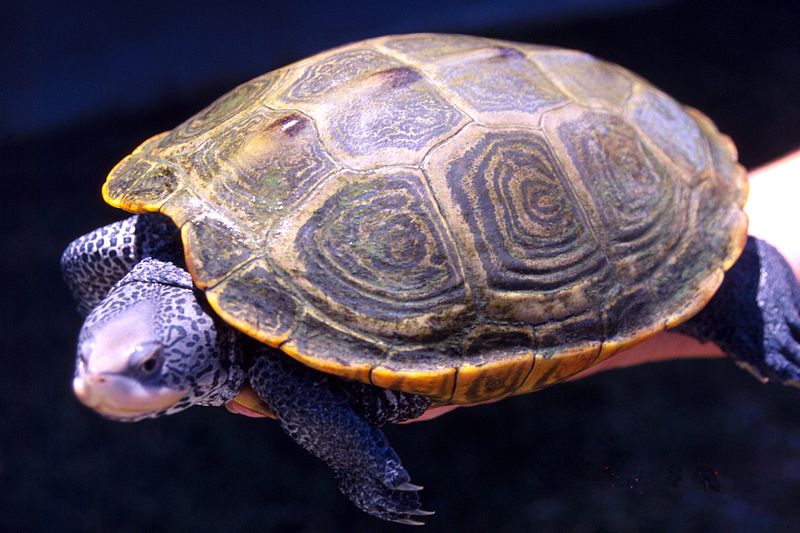 A bacterium that naturally occurs on the skin of certain frogs and salamanders has been shown to protect these animals from infection by a deadly Chytrid fungus infection. Chytrid fungus, known as Batrachochytrium dendrobatidis, has been very much in the news since its discovery in 1999. It is believed to have caused the extinction of up to 200 amphibian species, and is still spreading in many countries. Read More »
A bacterium that naturally occurs on the skin of certain frogs and salamanders has been shown to protect these animals from infection by a deadly Chytrid fungus infection. Chytrid fungus, known as Batrachochytrium dendrobatidis, has been very much in the news since its discovery in 1999. It is believed to have caused the extinction of up to 200 amphibian species, and is still spreading in many countries. Read More »
Category Archives: Conservation
Feed SubscriptionEgg Retention (Dystocia) in Turtles – the Problem and Some Solutions – Part 1
One of the most common and serious problems faced by turtle keepers involves female turtles (mated or unmated) that develop eggs but refuse to deposit them in the terrariums or aquariums in which they live. While this can be the result of any number of health problems (i.e. low calcium levels, tumors), the lack of an appropriate nesting site is more often than not the cause.
Retained Eggs
It’s very difficult to keep turtles, especially semi-aquatic and aquatic species, in an enclosure that allows for year-round access to a nesting site. Providing a terrestrial nesting site, as well as adequate swimming space, usually involves the use of a pool or pond as opposed to an aquarium. Read More »
The Natural History and Captive Care of the Smokey Jungle Frog – Part 2
 Please see Part 1 of this article for information on the natural history, amazing reproductive biology (including terrestrial nesting) and captive breeding of the Smokey Jungle Frog (a/k/a South American Bullfrog, Leptodactylus pentadactylus).
Please see Part 1 of this article for information on the natural history, amazing reproductive biology (including terrestrial nesting) and captive breeding of the Smokey Jungle Frog (a/k/a South American Bullfrog, Leptodactylus pentadactylus).
Diet
The hefty, robust adults are capable of taking quite large prey, including small birds, snakes, other frogs, mice and other rodents, scorpions and tarantulas as well as earthworms, roaches, moths and other invertebrates.
Smokey Jungle Frogs they are one of the few animals known to consume the highly toxic Poison Frogs, Dendrobates spp.
I’ve had good success with a diet comprised largely of earthworms, roaches, crickets and wild-caught insects (please see my article on Collecting Feeder Insects). I use shiners and crayfishes as a calcium source, but a pink mouse may be offered every 6-8 weeks if desired. Read More »
The Conservation and Captive Care of the Diamondback Terrapin
 Turtle enthusiasts find the Diamondback Terrapin (Malaclemys terrapin) very difficult to resist. Sporting a beautiful carapace that is deeply etched with concentric rings, and clad in a bewildering array of gray, silver and black markings, this estuary specialist does, however, present a few challenges to prospective keepers.
Turtle enthusiasts find the Diamondback Terrapin (Malaclemys terrapin) very difficult to resist. Sporting a beautiful carapace that is deeply etched with concentric rings, and clad in a bewildering array of gray, silver and black markings, this estuary specialist does, however, present a few challenges to prospective keepers.
A Unique Natural Habitat
The Diamondback Terrapin is the only North American turtle completely restricted to estuaries, tidal flats, lagoons and salt marshes. Neither a fresh water nor marine species, it is uniquely adapted to brackish habitats. Read More »
Study Hints at Global Snake Population Decline
A recent review of studies involving 17 populations of 8 snake species, including Ball Pythons, Asps, Rhinoceros Vipers and Gaboon Vipers, has raised the alarming possibility that steep declines may be in progress in many countries. While it is too early to draw conclusions, this news is disturbingly similar to the origins of the global amphibian decline first uncovered in 1990.
Ominous Findings
The most frightening aspect of the study is the fact that unrelated snake species in widely varying habitats and locations (Italy, Nigeria, France, Australia) were involved. Some of the largest declines – 90% in several cases – were recorded in protected areas. Much like the extinction of the Golden Toad, which disappeared from a pristine cloud forest in Costa Rica, these mysterious declines point to causes that are difficult to identify and remedy. Read More »
 That Reptile Blog – Reptile, Amphibian and Exotic Pet Care and Information
That Reptile Blog – Reptile, Amphibian and Exotic Pet Care and Information
